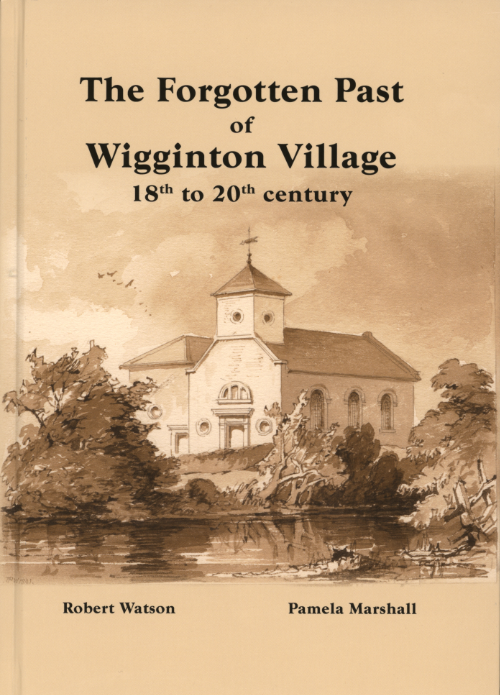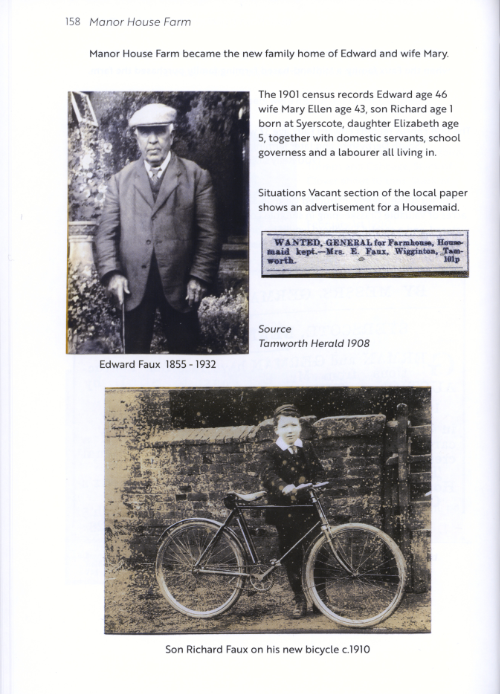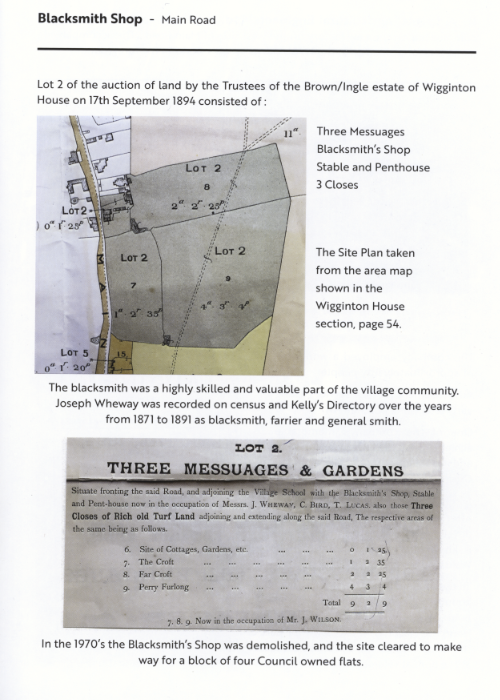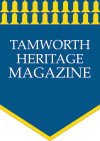
The forgotten past of Wigginton village 18th to 20th century
by
Robert Watson & Pamela Marshall

Publisher: Privately
Published: 2024
ISBN N/A
Printed by BenHill Press Rugely
Reviewed for Volume 3 Issue 2 Spring 2025
The Review
This is a labour of love by the authors and a must have for anyone in, or with relatives in, or an interest in Wigginton. A beautiful hardback book is the sort of book you can pick up, flick through and find something interesting, I did every time I opened it. You don’t need to read it end to end. Though I must admit I ended up doing that.
Whilst it claims to cover 18th to 20th centuries the first two pages are “early years”, a gallop from 1086 to 1770, followed by a fantastic hand coloured map showing the 40 odd buildings in the village from the 18th century. Additionally it names all the fields from Watery Gate and Far Holme east of the railway line to Hanging Pit and Bottom Meadow in the west, Tank Field and Reel Harrow in the south and finally up to Night Pasture in the North.
However this is not a history book as such. The rest of the book focuses on places rather than chronology. For each there are numerous photos. Now I know what you are thinking, photos from the 1700s? Well there are pictures of various interesting documents, maps, posters, newspaper cuttings and signs from the 1700s and early 1800s. Then the addition of photos from the late 1800s with notes giving what, why and crucially who is in them. This is a record of people, something that is very often lost with old photographs. This gives a history of the places and people. Things like the Rev JR Bates from the 1930s with his dog, Patch. It’s these details that bring things to life and for Patch to live on forever. Well, we are a nation of dog lovers.
Much of the information from the 20th century is, I suspect, oral history and details that will be all but impossible to find by outsiders with traditional research.
There are sections on the community, and some of the people in it along with Samuel Parkes VC who earned the medal at the infamous Charge of the Light Brigade and survived. Perhaps more important to the village is Elizabeth Beardsley and her legacy.
Other gems are the discussion on whether to install 4 electric street lights in 1928 to run from dusk until 10:30 at night. The thing is this book whilst discussing the 18th to 20th centuries often references things a millennium before. |
 |
 |
For casual readers this is a fantastic book. For historians, this is not a comprehensive history but will be a very useful resource for anyone researching the village. Especially as all the sources are given for the photos, maps etc. This will save hours (weeks) of research as you can start where this book stops, but you will be in the right place to find the rest. However as mentioned I think there is some oral history in there too you won’t find elsewhere.
The important thing is they name the people in the photos, which is invaluable for historians. With a name, date and picture you can easily find the rest of the recorded history.
The authors could have also done this but where do you stop? The history of Wigginton in 3, 4, 5 or more volumes? |
For anyone with a connection to the village this will be a wonderful book to have.
This book has been privately printed and as one of the authors doesn’t have email if you are interested in getting a copy email the Editor Editor@TamworthHeritage.org.uk and we can forward requests.
Also, if anyone has this book and has additional information, not in it, Tamworth Heritage Magazine would like to here from you with a view to doing some articles on Wigginton. We may even be looking at another volume! email to Editor@TamworthHeritage.org.uk
